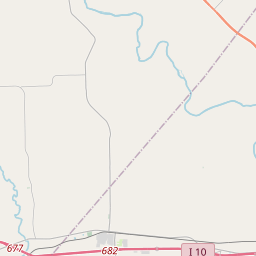Brandt Cemetery
Historical marker location:






Eilert Gerhard Brandt and his wife, Sophie Friedrich Wilhelmine Westing Brandt, immigrated from Oldenburg, Germany to this area in April 1888. They purchased nearly 400 acres of land near the community of Pecan (Holman). Just months later, in June 1888, they established this cemetery with the burial of Meta Wienken, who had cared for their sons H. Emil and George F. before the couple had arrived with four more of their children. Six others had been stillborn or died young and were buried in Germany.
After her husband's death in 1919, Wilhelmine (d. 1924) sold the land to George and his wife, Julia, who built a home nearby. In the 1930s, George and Julia sold the property to their children.
In 1952, family members formed the Brandt Cemetery Association, which holds annual decoration days for the burial ground. The cemetery features curbed burial plots and slab grave covers. It remains a link to the Brandt family and the many German immigrants who helped settle Fayette County.
Historic Texas Cemetery - 2002
As one of the most visible programs of the Texas Historical Commission (THC), historical markers commemorate diverse topics in Texas history, including: the history and architecture of houses, commercial and public buildings, religious congregations, and military sites; events that changed the course of local and state history; and individuals who have made lasting contributions to the state, community organizations, and businesses.
The state of Texas was once an independent country known as the Republic of Texas. It gained independence from Mexico in 1836 and was a separate nation until it was annexed by the United States in 1845.
The establishment of Anglo-American settlements in Fayette County started in the 1820s under Stephen F. Austin's colony. The town of La Grange, which would become the county seat, was founded in 1826 and named after the ancestral home of General Lafayette. Over the next few decades, more pioneers arrived, attracted by the fertile soil and opportunities for farming and ranching. German immigrants, in particular, played a significant role in the county's development, establishing thriving communities and introducing their agricultural practices.
During the mid-19th century, Fayette County became embroiled in the turmoil of the Texas Revolution and the Civil War. The Battle of Fayetteville, fought in 1836, marked a significant event in the struggle for Texas independence. Confederate soldiers from Fayette County fought in various battles during the Civil War, including the Battle of Galveston and the Battle of Sabine Pass.
In the late 19th and early 20th centuries, Fayette County experienced economic growth and cultural diversification. Railroads connected the county to larger markets, stimulating trade and commerce. The discovery of oil and gas reserves further bolstered the local economy. Today, Fayette County is known for its agricultural industry, with crops like cotton and corn, as well as cattle ranching. It also attracts tourists with its historical sites, including the Monument Hill and Kreische Brewery State Historic Sites, which commemorate important moments in the county's history.
Fayette County Timeline
This timeline provides a condensed summary of the historical journey of Fayette County, Texas.
- 1837 – Fayette County is established as one of the original counties of the Republic of Texas.
- 1838 – The permanent county seat is established in La Grange.
- 1861-1865 – Fayette County residents actively participate in the Civil War.
- 1873 – The railroad reaches Fayette County, spurring economic growth.
- 1901 – The first oil well is drilled in the county, leading to the discovery of the West Point Oil Field.
- 1905 – The monumental Fayette County Courthouse is built.
- 1950s-1970s – Fayette County experiences an agricultural boom due to the construction of the Fayette Power Project and Fayette Nuclear Plant.
- 1998 – Fayette County celebrates its 150th anniversary.
- 2011 – The historic town square in La Grange is added to the National Register of Historic Places.